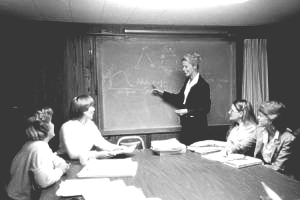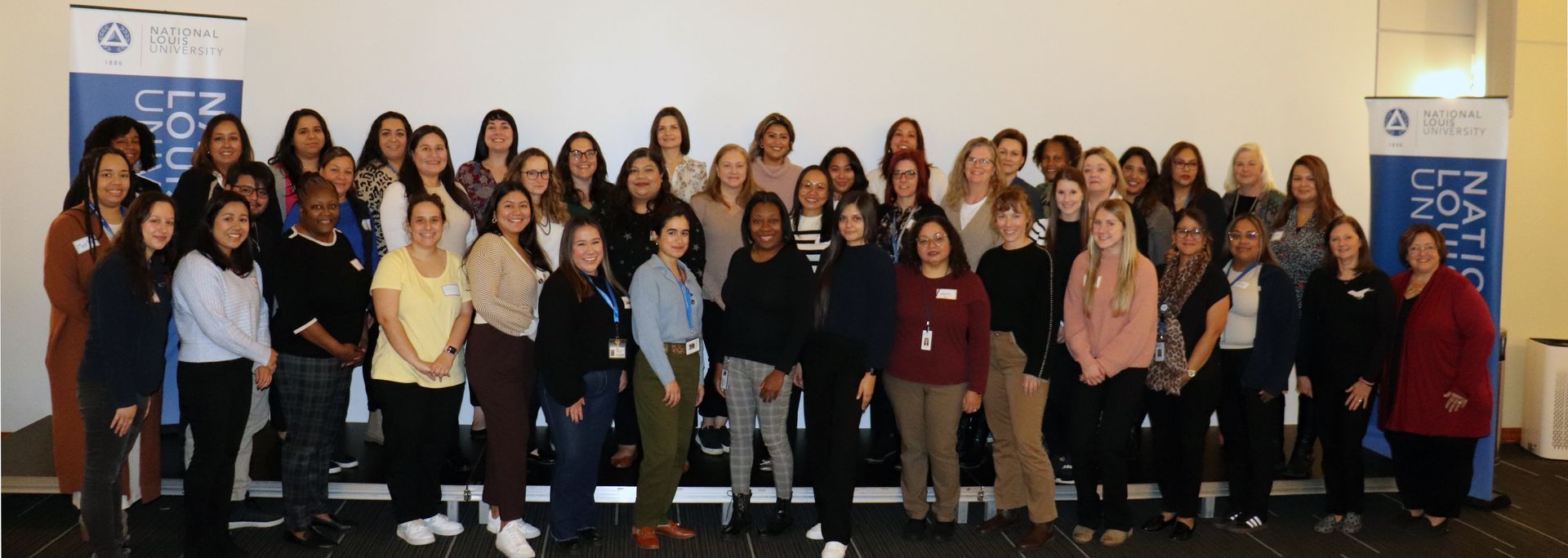This document may be printed, photocopied, and disseminated freely with attribution. All content is the property of the McCormick Center for Early Childhood Leadership.
There is a good amount of enthusiasm among early childhood educators to create more opportunities for teachers to learn and grow within their program. As Rick DuFour so aptly states, “The best staff development is in the workplace not the workshop.” There is plenty of evidence to support this notion. According to a research study by Fixen, Naoom, Blasé, Friedman & Wallace (2005), “One thing we can say with certainty is that workshops are not effective if building skills and dispositions is the desired outcome.” Our own personal experiences probably support this evidence. I’ve had many experiences attending a great workshop, but by the time I returned to my classroom on Monday morning I could not fully recall, much less fully implement, all the lessons I had learned. I enjoyed the opportunity to network and have a professional development opportunity at a conference, but it was not easy to transfer the learning into my everyday practices with children. So what can we do if we want our teachers and staff to learn and grow in the workplace? The answer to this question may lie in peer learning teams.
Peer learning teams, sometimes known as communities of practice, are a great way to bring learning into the workplace. The problem is that as a program leader you can’t simply announce, “Starting this week we will be having weekly peer learning team meetings.” Instead, in the book Inspiring Peak Performance: Commitment, Competence, Collaboration, my coauthors and I developed the steps below to better prepare your teachers and program for successful peer learning teams.
STEP 1: DETERMINE TEAM READINESS
Not all programs are a good fit for implementing learning teams. Before launching into this approach, first assess your program’s level of readiness to engage in peer learning teams. Here are a few critical questions to consider in determining whether this model of professional development is a good fit for you and your staff:
- Do your teachers demonstrate an interest in continued improvement and the joy of refining their craft?
- Does your organizational climate promote a high level of collegiality? Are your teachers friendly, supportive, and trusting of one another?
- Do teachers have a shared understanding of your center’s core values?
- Do teachers exhibit a deep and genuine interest in children’s learning?
- Are you willing to modify work schedules so teachers have time to meet on a regular basis?
- If you can to answer yes to these five questions, there is greater likelihood you’ll experience success in implementing learning teams in your program.
STEP 2: ARTICULATING A RATIONALE
The second step is to communicate to your teachers a rationale for doing this work and inviting them to participate. It includes articulating a clear and compelling message for the use of peer learning teams in your program. There are many reasons why directors implement learning teams at their centers. Here is an exercise to help consolidate your reasons for pursuing this kind of work.
Read through the following reasons and select the two that best describe why introducing peer learning teams at your center might be a good strategy for continuous quality improvement.
- To create a collaborative culture that focuses on thinking more deeply about children’s learning and interests
- To provide an ongoing support system for teachers to help them learn and grow
- To help teachers build leadership skills like group facilitation, active listening, probing for understanding, and providing feedback in a respectful way
- To help teachers make meaning out of early learning standards, assessments, and data
- To foster a collective commitment to the center’s core value of continuous improvement.
- To strengthen centerwide collegiality
- To encourage intentional teaching practices that link theory to practice
STEP 3: DECIDING ON STRUCTURE
The third step in getting started is to determine group size, composition, and the frequency that the peer learning teams will meet. Being intentional about allocating time is essential. Remember the secret to success in this small-group work is that the groups meet regularly over an extended period of time. Engage your teachers in brainstorming possibilities for when groups could meet, or consider allocating time at your regularly scheduled staff meetings for learning team work. Ideally one hour a week every two weeks would be devoted for learning team meetings. This may seem like a big commitment at first, but once teachers experience firsthand the power of being part of a learning team, they become invested in finding time to meet.
Once you have completed these steps you will be well on your way to launching a successful opportunity for teachers to gather together to deepen their knowledge of young children’s learning and improve their classroom practices. It is important to note the need for some structure in guiding the peer learning teams’ work. This often works best by inviting someone to facilitate using a protocol with guided questions to navigate the group’s learning.
To learn more about peer learning teams, the role of facilitator, and ideas for guided questions and protocols, check out these resources:
Bloom, P. J., Hentschel, A., & Bella, J. (2013). Inspiring peak performance: Commitment, competence, collaboration. Lake Forest, IL: New Horizons.
Curtis, D., Lebo, D., Cividanes, W., & Carter, M. (2013).
Reflecting in communities of practice: A workbook for early childhood educators. Paul, MN: Redleaf Press.
McDonald, J. (2007).
The power of protocols (2nd ed.). New York: Teachers College Press.
Ann Hentschel is Director of Quality Assessment at the McCormick Center. She conducts a training titled “The Power of Peer Learning Teams” for the McCormick Center’s Taking Charge of Change™ initiative and facilitates numerous learning team conversations for early childhood leaders. Ann is coauthor of two Director’s Toolbox books: A Great Place to Work and Inspiring Peak Performancewith her colleagues Paula Jorde Bloom and Jill Bella.






